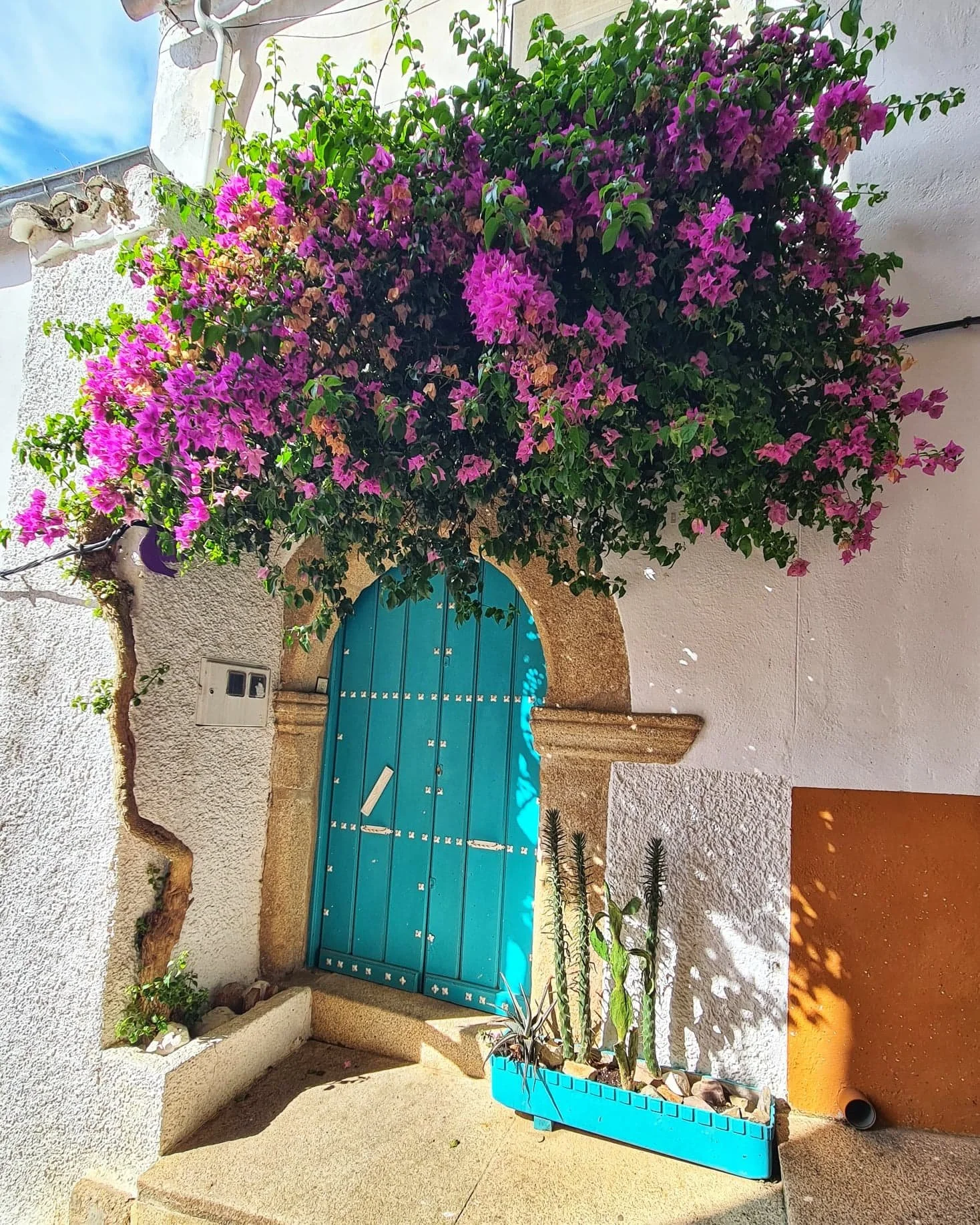Caceres, Extremadura, Spain. - A weekend in the most authentic Spanish town we have visited.
Caceres is in Extremadura, about 3 hours from Seville on a bus. Extremadura is in central western Spain on the Portuguese border.
We checked into our accommodation – the Parador of Caceres in the heart of the old town.
Paradores are old Spanish buildings like old convents, palaces etc that have been converted into luxury accommodation. They are government owned and must be a high level of accommodation and are mostly in regional areas.
The restaurants of the Paradores have to be 5 star and use local produce. So very fancy schmancy.
Our first afternoon in Caceres we had a little time to explore and found the Plaza Mayor. It’s a huge open plaza with some unusual “Caceres” signs in bright colours.
We went out for dinner at 8pm as there is nothing open for food before that. Caceres is like going back in time and they observe the “Siesta time” where everything shuts.
There is a lovely Plaza de San Juan which has a small garden in the middle, the Iglesia de San Juan at one end and numerous restaurants and bars around the other edges.
We headed out early on Saturday morning to walk around the old town before it got too hot. We headed to Plaza Mayor for a café con leche and tostada de tomate before we headed up the stairs and under the Arco de Estrella (the Arch of the stars). The arch forms part of the city wall that surrounds the old town.
Next, we wandered into Plaza de Santa Maria and the Iglesia De Santa Maria. After an old lady yelled at us for not giving her money, we quickly moved on and found the gorgeous White building called the Iglesia de San Francisco Javier and convent. It is an imposing building up three levels of large staircases. We wandered around and admired the building and found a little secret garden with, of course, a water feature.
Then we decided to walk around the rest of the city wall down to the old Jewish Quarter. There were lovely little white houses with blue doors and bright flowers. Very pretty area.
We headed back up to the centre of the old town to Plaza de San Mateo where the church was getting ready for a wedding. Lots of flowers and fancy cars in the Plaza. Was a great spectacle to watch.
Right next door is the Plaza de Las Veletas. The city museum is here in the Palacio do Las Veletas and contains the second most expansive cistern from the Roman era under the museum.
There is also a lot of Spanish modern art and Roman artifacts, and the bonus is, it was airconditioned.
Right next door is the Palacia and Torre (tower) Ciguenes which now is the Military museum. It is full of so many weapons that I found it a bit gory. Lyle liked the history of the army and the civil war information. If you look at the museum as a way to honour the people who served and died in the civil war, then you will appreciate the museum.
After all our walking and exploring we went to take a Tuk Tuk tour. This was a fabulous way to learn all about the history of the old town Caceres. The tuk tuk can go in all the narrow, steep, cobblestone streets. The commentary was fabulous and we highly recommend doing this tour.
Caceres still shuts down around 3pm for a few hours, so nothing more to do than have a siesta in the airconditioning.
All restaurants don’t open until 8pm or 8.30pm, so no point going out any earlier for food.
We went to a fancy restaurant called El Figon in Plaza San Juan which my online Spanish teacher had recommended. I’m so glad we went there because it was a fabulous meal.
Walking home feeling very satisfied we discovered a whole new side to Caceres. The whole old town lights up at night and looks like it is covered in gold. There are little restaurants where people are eating by candlelight. It was very romantic.
There were tour groups and tuk tuks all around the old town, and I can certainly recommend exploring at night.
We didn’t hear another English speaker all weekend. Most of the hospitality people don’t speak any English and the ones who do, speak at a very basic level (a bit like my Spanish).
Caceres is like stepping back in time into the middle ages. It is the most authentic Spanish city we have visited.












